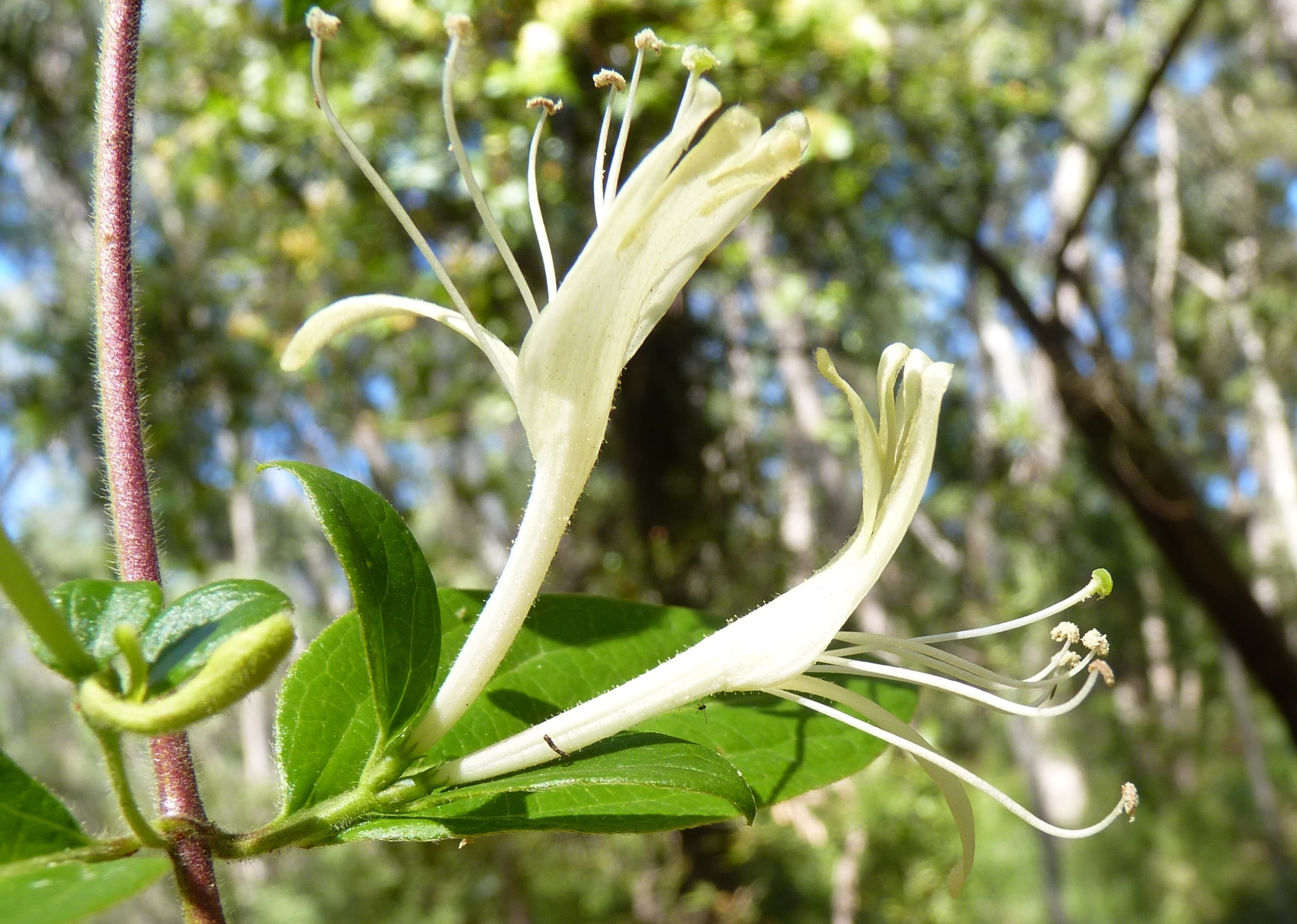
Evergreen and deciduous trees and shrubs, and a few climbers and herbs. Leaves mostly opposite, simple, sometimes pinnate or compund, entire to saw-toothed, leaf bases sometimes clasping (e.g. Valeriana); stipules absent. Flower clusters with flowers often in pairs fused at the ovary, occasionally solitary. Flowers bisexual, mostly irregular. Calyx of 4 or usually 5 partly fused sepals. Corolla of 4 or usually 5 lobes and more or less 2-lipped, the tube constricted below the calyx lobes. Nectar produced by glandular hairs on lower part of corolla tube. Stamens (1–) 2, 4 or usually 5, alternating with the lobes, filaments attached to the tube. Ovary inferior, of 2-5, rarely 8, fused carpels,1-numerous ovules per locule, with axile placentation, rarely parietal at the apex, some carpels often aborting. Style 1, elongate; stigma capitate. Fruit an achene, capsule, berry or drupe.
Traditionally considered to be related to Cornaceae and Rubiaceae. The family has recently been recircumscribed broadly, and now includes Diervillaceae, Dipsacaceae and Valerianaceae. Viburnum and Sambucus, with umbellate inflorescences and half-inferior ovaries, have been transferred to Adoxaceae. Sambucus in the past has also sometimes been placed in its own family Sambucaceae. This treatment follows Stevens, P.F. (2018, Angiosperm Phylogeny Website).
Rarely cultivated genera include: Cephalaria consisting mostly of alpine species from Europe, including the pale yellow-flowered C. alpina (L.) Roem. & Schult., C. gigantea (Ledeb.) Bobrov and C. leucantha Schrad. Knautia from the Mediterranean, is grown as K. arvensis (L.) T. Coult., Blue Buttons, a perennial with pale blue heads, and K. macedonica Griseb. with deep purple flowers. The monospecific genus Succisa, as S. pratensis Moench, Blue Buttons, from Europe, W Siberia and N Africa, is grown as a border or cottage garden plant to 1 m tall with purple, pink or white flowers. Pterocephalus as P. perennis is a cushion-forming plant with purple-pink flower heads to 10 cm high. [P. parnassi Spreng.]
Some members of the former family Dipsaceae are used in floristry and the cloth industry. Root and leaf extracts of Valeriana species have medicinal properties. Valerianella is used as a salad plant. Species in the genus Nardostachys are used to produce dyes and perfumes.
Simple opposite leaves; petals fused; flowers irregular; ovary inferior. Caprifoliaceae is readily distinguished from Adoxaceae by its bilateral (vs radial) flowers with an elongate (vs short) style, capitate (vs lobed) stigma and nectary composed of glandular hairs on the lower part of corolla tube (vs a glandular nectary on top of the ovary or nectary absent (Judd et al 2016).
About 30 genera and c. 890 species, mostly from temperate and subtropical northern hemisphere, Australia, Eurasia, tropical Africa and America, with centres of distribution in E America and E Asia.
Judd et al (2016).
Source: (2002). Caprifoliaceae. In: . Horticultural Flora of South-eastern Australia. Volume 4. Flowering plants. Dicotyledons. Part 3. The identification of garden and cultivated plants. University of New South Wales Press.
Updated by: Val Stajsic, April 2018
